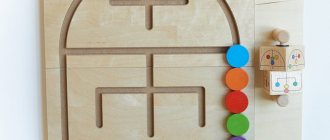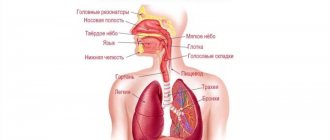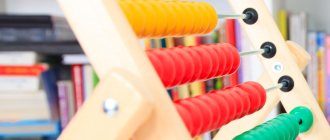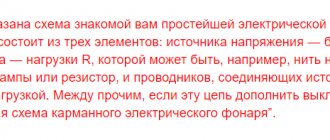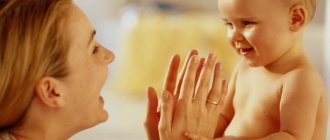Development of the pronunciation side of speech in normal and pathological conditions
Basic (key) concepts : humming, sound attack, babbling, syllable, first words, word stress, logical stress, palatalization, monomorphic disorder, polymorphic disorder, sound replacement, sound mixing, sound distortion, omission (absence) of sound, phonological defect, morphological defect, sigmatism, lambdacism, rotacism, kappacism, gammacism, chitism, iotacism.
The pronunciation side of speech is a direct result of the motor implementation of speech activity. However, having a fully formed peripheral speech apparatus, the child does not have perfect pronunciation capabilities that ensure the reproduction of “adult” norms of sound pronunciation. Their active development is observed during the first 5-6 years of life.
An important role in the development of the pronunciation aspect of speech in ontogenesis is played by the improvement of articulatory skills and the formation of the child’s phonemic hearing. Accordingly, the development of phonemic hearing and articulation prepares the basis for the formation of normative sound pronunciation.
The pre-phonemic stage of child development (from birth to 1 year) is characterized by the formation of the following functions: - non-speech auditory gnosis, which is the basis for the development of phonemic hearing, - elementary pronunciation skills, manifested in the form of pre-speech reactions, - physiological and speech breathing, - voice formation.
The baby's first vocal reaction is the newborn's cry.
.
It appears against the background of the first exhalation after expansion of the lungs and is an unconditional reaction to external and internal stimuli. The cry of a healthy newborn is loud, long, clear, with a short inhalation and a long exhalation. In terms of sound, it is an indivisible sound stream, from which it is almost impossible to isolate individual sounds. The exception is the sound [ a
], reproduced in a scream when the mouth is opened wide.
The development of auditory perception in a child of this age is based on innate orientation reflexes. So, at a sharp sound, the newborn shudders with his whole body, freezes and listens. Subsequently, in the second month of life, when a child perceives a sound signal, he is able to turn his head towards the stimulus and follow the source of the sound (rattle) with his eyes.
With normal speech development, by 2 months the frequency of crying decreases and a new pronunciation reaction appears - humming.
.
It arises in response to physiological comfort, is carried out on a soft attack of sound and includes not only combinations of undifferentiated vowels, but also prototypes of consonants (“ a-gu, boo-u, a-bu
”, etc.).
By 4-5 months, the activity of humming gradually decreases, and the child develops a new pre-speech reaction - babbling
.
It, like humming, mainly consists of undifferentiated sounds. However, over time, vowels [ a, o, i, y
] and consonant sounds [
b, b, g, m, m, d, t, k, p, p
] become clearly distinguishable in babbling. At the same age, the child experiences the first differentiation reactions. The baby begins to distinguish qualitatively different sounds of the surrounding world (doorbell, knocking, etc.), to distinguish the sounds of the human voice from the many non-speech sounds and noises, and to react to them differently. Further development leads to improvement of auditory perception. By 5-6 months, the baby can already clearly distinguish the voices of loved ones. The voice of a stranger leads to a slowdown in the child's general movements. He reacts differently to his mother's voice - her melodious speech calms him down. However, a child under one year old, perceiving a speech utterance, does not isolate individual phonemes from it, only its rhymic-melodic contour is acquired.
The beginning of the assimilation of the rhythmic-syllabic organization of speech is noted at the age of 5-6 months, which is associated with the rhythmic pronunciation and repetition under the control of hearing of stable sound combinations (syllables) - the appearance of babble.
The first babble chains can be extremely varied. So, by 5 months the baby begins to vocalize
in the form of rhythmic singing of combinations of vowel sounds.
By 6 months, a healthy child begins to reproduce two identical syllables (“ maaa-maaa
,
baaa-baaa”
, etc.).
At 6-7 months, the baby masters chains of 3-4 stereotypical (identical) segments (“ ma-ma-ma-ma, ba-ba-ba”,
etc.).
Then the sound composition of babbling structures becomes more complex - the child alternates in babbling syllables with different vowel sounds (“ te-te-cha, ba-ba-ba-bi”
and so on.).
By 9-10 months, rhythmic combinations of various syllables (“ di-di-ka, ma-ma-cha, a-ka”,
etc.) are reproduced in babbling.
In addition, in the preverbal period, the respiratory and vocal sections of the speech apparatus, which form the energetic basis of sonorous speech, develop. Thus, in the process of screaming, the baby’s physiological basis for short volumetric inhalation and long oral exhalation, necessary for speech breathing, is formed and consolidated. During humming and babbling, which are mainly carried out on the basis of a soft attack of sound, the formation of the mechanism of voice formation and vocal delivery occurs.
Thus, by the end of the first year of life, children pronounce most vowel sounds and some consonant sounds, the articulation of which is characterized by low articulatory tension. They distinguish well between the usual sounds of the surrounding world, people's voices, and intonations. However, the system of phonological oppositions of speech sounds is still very limited and unstable, which leads to the presence of undifferentiated sound pronunciation. By the age of one year, the mechanism of autonomous syllable formation is consolidated - the child masters the rhythmic-sound structure of different types of syllables. The mechanisms of speech breathing and voice formation are developing.
The active development of the pronunciation aspect of a child’s speech begins with the appearance of the first words
(1-1.5 years).
The rhythmic-syllable structure of the child's first words basically repeats the structural organization of babbling. So, at the age of 1 year, the baby, as a rule, reproduces words consisting of two identical open syllables (“ ma-ma, bi-bi, ku-ku
”, etc.), or repeats one (usually stressed) syllable of what he heard words (Misha – “
mi
”).
Their phonetic composition is extremely close to babbling combinations, and is characterized by the presence of vowels [ a, i, u, o
] and consonant sounds [
m, m, p, p', b, b, k, d, t, g, x, l
].
Somewhat later (by the age of 2), whistling sounds [ сь, зь
], as well as a softened stop-frictional [
ts'
], appear in children's speech. A characteristic feature of the sound pronunciation of a child of the second year of life is palatalization (softening) of most consonant sounds. This is due to age-related insufficiency of the functions of voluntary regulation of muscle tone in the subcortical structures of the brain.
By the age of one and a half years, two-syllable words consisting of different syllables appear in the child’s speech (“ kisa, deka, koka, aika
" and so on.).
The structure of reproduced three-syllable words is simplified by him to two syllables (dog - “ baka
”, cow - “
vova
”, etc.).
At the same age, the initial stage of phoneme differentiation is noted. At the beginning of the second year of life, children begin to distinguish a group of vowel sounds from all consonants based on their consonance and sonority. Within the group of vowels, the wide vowel [ a
] is differentiated first, then the most opposed in articulation and sound [
i-u
], [
i-o
], [
e-u
], [
e-o
], and somewhat later the closer ones [
i-e
].
Last of all, children distinguish between close sounds [ i-y
] and [
o-u
]. In general, this period ends by one and a half to two years of a child’s life and smoothly transitions into the next.
Further development of the pronunciation aspect of speech is associated with an increase in the speech activity of children aged 2-3 years. A child of the third year of life actively masters the phonetic system of his native language. Clearly articulated labial sounds appear in his speech [ v, vi, f, f
], whistling [
s, s', z, z'
], whistling affricate [
ts
], sonorant [
y, l, l
].
Hissing sounds [ sh, zh, sh
] begin to appear.
But their use in speech is still unstable, and they are often replaced by sibilants that are similar in acoustic-articulatory characteristics. The sibilant affricate [ h
] is still absent or is split into components [
т
] or [
ш
].
Omissions of sonorant sounds [ р, рь
] or their replacement with [
й, л
] are typical.
By the age of three, the ability to voluntarily control the movements of the organs of articulation increases, muscle tone is normalized, and the child begins to correctly reproduce articulatory differences in hard and soft consonants in speech. At the same age, phonological oppositions of labialized vowels [ о-у
] are consolidated, and the system of oppositions of consonant sounds is mastered.
Thus, voiced sonorant sounds are the first to be distinguished in a group of consonants. The basis of this process is their opposition to noisy consonants in sonority. The next differential feature that the child learns is the palatalization
of consonant sounds.
Initially, the baby perceives this sign as the only one existing in this group, but later begins to notice its absence. As a result, the distinction between soft and hard consonants is formed. Then the child learns to differentiate sounds with less pronounced features. Voiced and voiceless consonants are contrasted with each other on the basis of the intensity of their sound, plosives and fricatives - on the basis of duration, whistling and hissing - on the basis of their acoustic effect, sonorant [ l, l
] and [
p, r
] - on the basis of the presence of vocal vibrations. Differentiation of anterior, posterior and middle lingual sounds is carried out on the basis of the formation and consolidation of speech kinesthesia in the process of improving the child’s articulatory capabilities. Thus, by the age of two or three, the child as a whole has formed a system of phonological oppositions. Further development of sound discrimination is associated with the automation of acoustic-articulatory features of phonemes and the improvement of the phonological system, which is completed by the age of 5.
The period of 2-3 years is characterized by a rapid expansion of the baby’s active vocabulary. The child uses one-, two-, three-, and four-syllable words in verbal communication. However, in three- and four-syllable words one unstressed syllable is skipped (kolobok - “ kobok”
", monkey - "
mizzen
"). Complex words are often reproduced by the child as contour words.
In early and middle preschool age (3-5 years), the child’s pronunciation skills are further improved. During this period of development, the preschooler consciously acquires such concepts as verbal
and
logical stress
, learns to highlight with the voice the most semantically important parts of the statement. By the age of 5, children develop an interest in rhyming games, and preschoolers select chains of words with the same rhythmic structure.
The pronunciation of most sounds of the native language becomes normative. The child correctly uses whistling and hissing sounds in speech, the hissing affricate [ h
], iotated vowels [
e, ё, yu, ya
] appear.
By the age of five, a child masters the pronunciation of the most difficult sounds in terms of articulation [ р, рь
].
However, their use in speech can be unstable. Basically, these sounds are correctly pronounced at the beginning or end of words. In the middle of a word, their auditory perception turns out to be difficult, and vibrants are often replaced by stop-passes [ l, l
].
A stable pronunciation [ р, рь
] is formed by 5.5–6 years.
Below is an approximate diagram of the appearance of speech sounds in the pronunciation of children, indicating approximate age periods:
| [b] | — 1 year -1 year 1 month. | [d] | — 2 years 3 months. — 2 years 7 months. |
| [m] | — 1 year -1 year 2 months. | [X] | — 2 years 2 months. — 3 years 10 months. |
| [P] | — 1 year 1 month. — 1 year 4 months. | [xx] | — 2 years 2 months. — 3 years 3 months. |
| [th] | — 1 year 3 months. — 1 year 8 months. | [b] | — 2 years 3 months. — 2 years 9 months. |
| [To] | — 1 year 5 months. — 2 years 6 months. | [my] | — 2 years 4 months. — 2 years 10 months. |
| [G] | — 1 year 5 months. — 2 years 5 months. | [drink] | — 2 years 5 months. — 2 years 9 months. |
| [V] | — 1 year 8 months - 1 year 10 months. | [v] | — 2 years 5 months - 3 years |
| [f] | — 2 years — 2 years 4 months. | [ugh] | — 2 years 8 months. — 3 years 3 months. |
| [th] | — 1 year 10 months. — 2 years 1 month. | [h] | — 2 years 8 months. — 3 years 2 months. |
| [ny] | — 1 year 10 months. — 2 years 3 months. | [With] | — 2 years 8 months. — 3 years 1 month. |
| [d] | — 1 year 11 months. — 2 years 3 months. | [l] | — 2 years 11 months. — 3 years 6 months. |
| [l] | — 1 year 11 months. — 2 years 4 months. | [ts] | — 3 years 2 months. — 4 years 10 months. |
| [кь] | — 1 year 10 months. — 2 years 7 months. | [h] | — 3 years 1 month. — 4 years 4 months. |
| [gh] | — 2 years 1 month. — 2 years 6 months. | [sch] | — 3 years 5 months. — 4 years 5 months. |
| [smiling] | — 2 years 1 month. — 2 years 6 months. | [w] | — 3 years 8 months - 5 years |
| [z] | — 2 years 2 months. — 2 years 7 months. | [and] | — 3 years 8 months. - 5 years |
| [T] | — 2 years 1 month. — 2 years 7 months. | [ry] | — 4 years — 5 years 6 months. |
| [R] | — 5 — 6 years |
Thus, by the senior preschool age, the child fully masters the pronunciation side of speech.
However, in some cases the child does not master the phonetic system of the language. In speech, this manifests itself in the form of disturbances in sound pronunciation. Most often, children suffer from the pronunciation of the phonetic group of sonorants ( р, рь, l, l, th
), hissing (
w, zh, shch, h
), whistling (
s, s', z, z', ts
) sounds.
Less frequently, the articulatory and acoustic features of the posterior lingual ( k, k', g, g', x, x'
) are disrupted, as well as paired voiced and voiceless, hard and soft sounds. In addition, with some speech disorders (rhinolalia, dysarthria), the pronunciation of vowels is impaired.
Depending on how many sounds are pronounced incorrectly, sound pronunciation disorders are divided into simple and complex:
· simple ( monomorphic ) include disorders in which one sound or sounds of one phonetic group that have similar articulation are incorrectly pronounced.
· Complex ( polymorphic ) disorders include disorders in which the sounds of two or more phonetic groups are pronounced incorrectly.
In any of these groups, four types of sound disorders are distinguished:
1. Replacement of sounds is observed when the processes of their recognition by articulatory or acoustic characteristics are disrupted. As a result, one or more characteristics of a sound are unlearned, and in the process of selecting phonemes, the sound whose characteristics are closest to the given one is selected. Depending on which of the signs of sounds the child has not learned - acoustic or articulatory - sound replacements will be different: in terms of sonority, in softness, in acoustic effect, in the method of formation, in the place of articulation.
2. Mixing of sounds is observed when the processes of differentiation of phonemes according to articulatory or acoustic characteristics are disrupted. In this case, the child has formed general ideas about sounds, but the system of their phonological oppositions based on differential characteristics is unstable. As a result, in the process of distinguishing phonemes, first one or the other sound from an oppositional pair is selected. As a result, phonemes are mixed, the same word takes on a different sound form.
3. Sound loss (absence) can be observed in two cases. In the first, the child does not acquire the acoustic characteristics of the sound - it is absent from the phoneme lattice, as a result of which its articulation is not formed - the sound is absent in speech. This option of omission is noted in case of a targeted lesion of phonemic hearing. In the second case, the child has formed acoustic ideas about sound, however, its correct articulation for some reason is impossible. As a result, during auditory perception the child recognizes the sound, but does not use it in speech.
4. Distortion of sound is observed if the child has formed an incorrect articulatory structure of sound - some individual articulatory positions do not correspond to the normative ones. As a result, the sound is pronounced distortedly in violation of the pronunciation norm, but is recognized by ear as the corresponding phoneme.
The listed types of violations: substitutions, mixing, omissions and distortion of sounds are divided into two categories:
· Category 1 - phonological (phonemic) defects in sound pronunciation. These include replacement, mixing and omission of sounds (when acoustic characteristics are not formed). With these defects, children experience impaired phonemic hearing.
· Category 2 - anthropophonic (phonetic) defects . These include distortion and loss of sound (with unformed articulatory features). In this case, the pronunciation norm of speech is violated.
Knowing the nature of sound disturbances helps determine the methodology for working with children. For phonological disorders, the main emphasis is on the development of phonemic awareness. With anthropophonics, more attention is paid to the development of the articulatory apparatus.
Anthropophonic and phonological defects of each phonetic group of sounds have their own name. To designate them, international terms are used, derived from the names of the letters of the Greek alphabet using the suffix -ism
:
| Phonetic groups of sounds | Name of pronunciation defect | |
| anthropophonic | phonological | |
| Whistling: s, s', z, z', ts Sibilants: sh, zh, h, sch | sigmatism | parasigmatism |
| Sonorous vibrants r, r | rotacism | pararotacism |
| Sonorant occlusions l, l | lambdacism | paralambdacism |
| Voiceless plosives velar k, k | Kappacism | paracapacism |
| Voiced plosives g, g | gammacism | paragammatism |
| Posterior lingual fricatives x, xx | hitism | parachitism |
| Voiced sonorant th Iotated vowels e, e, yu, i | iotacism | paraiotacism |
Pronunciation disorders of phonetic groups of voiced and soft sounds do not have special terms - they are called:
· voicing defects;
softening defects.
In addition to types and categories, there are three levels of violation of the pronunciation of sounds:
· First level
. Complete inability to reproduce sound in spoken speech. It is absent at all levels of pronunciation - in phrasal speech, in individual words, syllables and in isolated form.
· Second level
. The sound is correctly pronounced in isolation (usually by imitation), but is distorted or missed in phrasal speech and in words. So the correct sound is there, but it is not automated.
· Third level
. The sound is correctly pronounced in isolation, in words and when repeating phrases, but in independent speech it can be distorted or mixed with another sound that is similar in articulatory or acoustic characteristics.
Violations of sound pronunciation have a negative impact on the formation of phonemic processes, the development of grammatical and lexical systems of the language, and affect the child’s communicative abilities. In this regard, overcoming these disorders is one of the important tasks of speech therapy work. Overcoming them will create favorable conditions for the language, speech and psychological development of the child.
Test questions and assignments:
1. Describe the pronunciation side of speech of a child of the first year of life.
2. Describe the pronunciation aspect of a young child’s speech.
3. Determine the features of the state of the pronunciation aspect of a preschool child’s speech.
4. Formulate the main patterns of development of the pronunciation aspect of speech in ontogenesis.
5. Determine the distinctive features of monomorphic and polymorphic disorder of sound pronunciation.
6. Describe the variants of impaired pronunciation of sounds.
7. Make a comparative description of phonological and anthropophonic pronunciation defects.
8. Describe the levels of impaired pronunciation.
Progress of the game.
Children sit in a clearing, flower petals are scattered around.
Speech therapist: - Once upon a time there was a “Forest Glade”. The insects Beauty Butterfly and Ladybug, the caterpillar Lucy and the Frog Kvasha lived together on it, and magical flowers bloomed on it: the seven-flowered flower, the chamomile and the bell. But one day the evil sorceress Bad Weather sent a wind into the clearing, which scattered the petals, tousled the flowers, and insects hid from Bad Weather. The Sun looked out in the morning, saw an empty clearing and became sad.
“Let’s cast a spell on the clearing, help the insects return, the flowers bloom, and cheer up the sun.”
The beautiful Butterfly flew in and brought with her different pictures. You need to select pictures in the words of which there is a sound (L) in a firm position and give it to the chamomile, placing a picture on each petal and fastening it to the buttons. Bell saw this and asked that they give him the pictures too. Children select pictures and place pictures in the words in which the sound (L) is in the initial position on the first flower, on the second flower - the sound in the middle, and on the third - in the final position.
“And then a curious caterpillar, Lucy, crawled up and offered to walk along the sound track of word-pictures.
— And in the neighboring swamp lives the frog Kvasha, who loves to sing. She jumps on water lilies and sings different songs. La-La-La; la-la-la-la, etc. Children sing along with the frog.
Here, in response to the noise, Ladybug flew in, the children help fasten her legs to the buttons and count the word they like as many as she has legs. (Score 1-6).
“Forest Glade” cheered up, the Sun smiled and spread its rays. The children smiled cheerfully and unbraided their rays.
SAND PLAY “ON THE MOON”.
OBJECTIVES: 1. Creating gaming motivation;
2. Automation of sound (L) in free speech;
3. Activation of the dictionary;
4. Introducing the letter L.
Equipment: box with sand, small toys.
